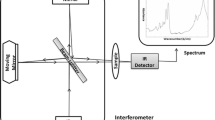Abstract
The extremophilic bacterium Deinococcus radiodurans displays an extraordinary ability to withstand lethal radiation effects, due to its complex mechanisms for both proteome radiation protection and DNA repair. Published results obtained recently at this laboratory show that D. radiodurans submitted to ionizing radiation results in its DNA being shattered into small fragments which, when exposed to a “static electric field’ (SEF), greatly decreases cell viability. These findings motivated the performing of D. radiodurans exposed to gamma radiation, yet exposed to a different exogenous physical agent, “static magnetic fields” (SMF). Cells of D. radiodurans [strain D.r. GY 9613 (R1)] in the exponential phase were submitted to 60Co gamma radiation from a gamma cell. Samples were exposed to doses in the interval 0.5–12.5 kGy, while the control samples were kept next to the irradiation setup. Exposures to SMF were carried out with intensities of 0.08 T and 0.8 T delivered by two settings: (a) a device built up at this laboratory with niobium magnets, delivering 0.08 T, and (b) an electromagnet (Walker Scientific) generating static magnetic fields with intensities from 0.1 to 0.8 T. All samples were placed in a bacteriological incubator at 30 °C for 48 h, and after incubation, a counting of colony forming units was performed. Two sets of cell surviving data were measured, each in triplicate, obtained in independent experiments. A remarkable similarity between the two data sets is revealed, underscoring reproducibility within the 5% range. Appraisal of raw data shows that exposure of irradiated cells to SMF substantially increases their viability. Data interpretation strongly suggests that the increase of D. radiodurans cell viability is a sole magnetic physical effect, driven by a stochastic process, improving the efficiency of the rejoining of DNA fragments, thus increasing cell viability. A type of cut-off dose is identified at 10 kGy, above which the irradiated cellular system loses recovery and the cell survival mechanism collapses.





Similar content being viewed by others
References
Daly, M.J.: A new perspective on radiation resistance based on Deinococcus radiodurans. Nat. Rev. Microbiol. 7(3), 237–245 (2009)
Krisko, A., Radman, M.: Protein damage and death by radiation in Escherichia coli and Deinococcus radiodurans. Proc. Natl. Acad. Sci. U.S.A 107(32), 14373–14377 (2010)
Slade, D., Radman, M.: Oxidative stress resistance in Deinococcus radiodurans. Microbiol. Mol. Biol. Rev. 75(1), 133–191 (2011)
Zahradka, K., Slade, D., Bailone, A., Sommer, S., Averbeck, D., Petranovic, M., Lindner, A.B., Radman, M.: Reassembly of shattered chromosomes in Deinococcus radiodurans. Nature 443, 569–573 (2006)
González, L.N., Arruda-Neto, J.D.T., Cotta, M.A., Carrer, H., Garcia, F., Silva, R.A., Moreau, A.L.D., Righi, H., Genofre, G.C.: DNA fragmentation by gamma radiation and electron beams using atomic force microscopy. J. Biol. Phys. 38(3), 531–542 (2012)
Arruda-Neto, J. D. T., Segreto, H. R., Gomez, J. G., Silva, L. F. D., Jorge, S. A., Mendonça, T. T., Prado, G. R.: Radio sensitization by static electric fields is observed in the extremophilic Deinococcus radiodurans exposed to gamma radiation. Webmed Cent. 39(1), WMCPLS00385.
Arruda-Neto, J.D.T., Friedberg, E.C., Bittencourt-Oliveira, M.C., Cavalcante-Silva, E., Schenberg, A.C., Rodrigues, T.E., Moron, M.M.: Static electric fields interfere in the viability of cells exposed to ionizing radiation. Int. J. Radiat. Biol. 85(4), 314–321 (2009)
Arruda-Neto, J.D.T., Friedberg, E.C., Bittencourt-Oliveira, M.D.C., Segreto, H.R.C., Moron, M.M., Maria, D.A., Batista, L.F., Schenberg, A.C.G.: The role played by endogenous and exogenous electric fields in DNA signaling and repair. DNA Repair 9(4), 356–357 (2010)
Dini, L., Abbro, L.: Bioeffects of moderate-intensity static magnetic fields on cell cultures. Micron 36(3), 195–217 (2005)
Binhi, V. N., Prato, F. S.: Rotations of macromolecules affect nonspecific biological responses to magnetic fields. Nat. Sci. Rep. (2018). https://doi.org/10.1038/s41598-018-31847-y
Caria, M.: Measurement Analysis: An Introduction to the Statistical Analysis of Laboratory Data in Physics, Chemistry and the Life Sciences. Imperial College Press, London (2000)
Blasius, M., Hübscher, U., Sommer, S.: Deinococcus radiodurans: what belongs to the survival kit? Crit. Rev. Biochem. Mol. Biol. 43(3), 221–238 (2008)
Weiss, G.H.: Aspects and Applications of the Random Walk. North Holland, Amsterdam (1994)
Steele, R.H.: Electromagnetic field generation by ATP-induced reverse electron transfer. Arch. Biochem. Biophys. 411, 1–18 (2003)
Acknowledgments
We are grateful to Prof. Antonio M. Figueiredo for the use of the magnetic field facilities in his Optics Laboratory/IF-USP.
Funding
One of the authors (LFS) is also grateful to CNPq (Brazilian Funding Agency) for the grant CNPq 309086/2018-3-productivity fellowship.
Author information
Authors and Affiliations
Corresponding author
Ethics declarations
Conflict of interest
The authors declare that they have no conflict of interest.
Additional information
Publisher’s note
Springer Nature remains neutral with regard to jurisdictional claims in published maps and institutional affiliations.
Appendices
Appendix A
Assuming a constant Magnetic Force Fm(B) and a viscous force inside the cell proportional to the velocity, f = γv (γ is the viscosity coefficient), both acting on a DNA fragment with mass m, from Dynamics it gives
whose solution is
Therefore, the velocity of each DNA fragment would increase asymptotically up to \( \frac{F_m}{\gamma } \), after exposure to SMF over a long period of time.
Appendix B
Be N(D) the number of surviving cells after irradiation with a dose D. If the dose is changed by a differential increment dD, the number of surviving cells decreases by dNs, that is,
Also, dNs is directly proportional to both Ns(D) and dD; thus,
and integrating Eq. (19) from (0; N0) to (D; Ns) renders
Interestingly, Eq. (20) contains an important statistical concept as evidenced by rewriting Eq. 19 as
We note that \( \frac{d{N}_S}{dD} \) is the variation of Ns per unit dose interval, which is a probability in the phase-space. Dividing this probability by Ns gives a relative probability, or, a normalized probability,\( \frac{1}{N_S}.\left(\frac{d{N}_S}{dD}\right) \), where its absolute value is a constant (λ).
Rights and permissions
About this article
Cite this article
Righi, H., Arruda-Neto, J.D.T., Gomez, J.G.C. et al. Exposure of Deinococcus radiodurans to both static magnetic fields and gamma radiation: observation of cell recuperation effects. J Biol Phys 46, 309–324 (2020). https://doi.org/10.1007/s10867-020-09554-5
Received:
Accepted:
Published:
Issue Date:
DOI: https://doi.org/10.1007/s10867-020-09554-5




